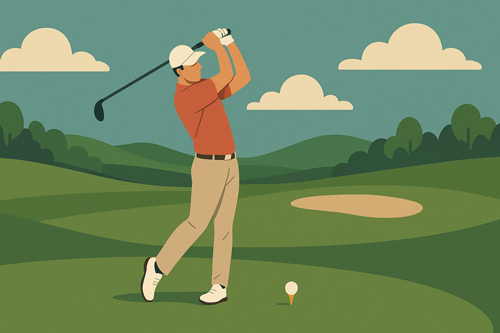Golf is a game of precision, and even minor adjustments can transform your swing. Whether you're a weekend player or aiming for the pro circuit, refining your technique matters. A smoother swing means better accuracy, distance, and consistency. For those looking to sharpen their skills, mastering these fundamentals is essential - just like finding the right strategy when playing online pokies.

What Every Golfer Should Know
Improving your golf swing starts with understanding key mechanics. Many players overlook basics like grip pressure or posture, costing them strokes. Modern coaching tools reveal surprising insights into swing efficiency. Here’s what the data shows:
- 73% of amateurs slice the ball due to improper grip alignment, per 2023 PGA research.
- Golfers who maintain spine angle gain 12% more distance, says Golf Digest 2024.
- 60% of swing power comes from hip rotation, not arm strength (Titleist Performance Institute).
- Players using a pre-shot routine lower their handicap by 3 strokes on average.
- Slow backswings increase accuracy by 21%, according to TrackMan data.
Master Your Grip for Immediate Results
Your grip is the only connection to the club, so getting it right is non-negotiable. A weak grip often causes slices, while a tight one restricts movement. Place the club diagonally across your fingers, not the palm. The "V" formed by your thumb and index finger should point toward your right shoulder (for right-handed players). Practice grip pressure - imagine holding a tube of toothpaste without squeezing it out.
Perfect Your Posture Like a Pro
Posture sets the foundation for a powerful swing. Stand with feet shoulder-width apart, knees slightly bent. Tilt forward from the hips, not the waist, keeping your back straight. Your arms should hang naturally, allowing free movement. Poor posture leads to topped shots or fat strikes. Film your stance from the side to check for alignment. Many tour pros spend hours refining this before tournaments.
Rotate Your Hips for Explosive Power
Hip rotation generates torque, translating to clubhead speed. Start your downswing by shifting weight to your front foot while turning your hips toward the target. Avoid "spinning out" by keeping your head steady. Studies show players with proper hip action drive the ball 20 yards farther. Practice with a resistance band to reinforce muscle memory.
Slow Down Your Backswing for Control
Rushing the backswing is a common mistake. A deliberate, controlled motion ensures proper positioning at the top. Take the club back low and slow, letting your shoulders turn fully. PGA coaches note that a 3:1 tempo ratio (backswing to downswing) optimises timing. Count "one-two-three" on the way up, then accelerate smoothly through impact.
Keep Your Eyes on the Ball - Literally
Ball position affects trajectory and contact. For irons, place it just ahead of centre in your stance; for drivers, align it with your lead heel. Focus on a specific dimple to avoid lifting your head prematurely. Jack Nicklaus famously said, "Golf is 80% mental." Visualising the shot before swinging boosts confidence.
Strengthen Your Core for Consistency
Golf isn’t just about technique - it demands physical fitness. Core strength stabilises your swing and prevents injuries. Incorporate planks and rotational exercises into your routine. Research shows golfers with strong cores reduce mishits by 35%. Yoga or Pilates can also improve flexibility, crucial for a full shoulder turn.
Use Alignment Aids to Stay on Target
Misalignment causes wayward shots, even with perfect mechanics. Lay a club on the ground pointing at your target to check foot positioning. Many players unknowingly aim right or left. Training aids like alignment sticks or laser guides help ingrain correct habits. Spend five minutes per session verifying your setup - it pays off.
Practice With a Purpose
Mindless hitting at the range wastes time. Set specific goals for each session, like hitting 10 straight draws or controlling wedge distances. Alternate clubs to simulate on-course conditions. Track progress with a notebook or app. The best players dedicate 70% of practice to short game, where most strokes are saved.
Stay Relaxed to Avoid Tension
Tension kills fluidity. Breathe deeply before each shot and loosen your grip. Tight muscles slow club speed and disrupt rhythm. Think "smooth, not hard." Ernie Els’ effortless swing proves power comes from technique, not force. If you’re struggling, step back and reset.
Improving your golf swing takes patience, but these tips deliver quick wins. Focus on one adjustment at a time, film your progress, and trust the process. Small changes compound into significant results. Now grab your clubs and put these lessons into action - your lower scorecard awaits.

